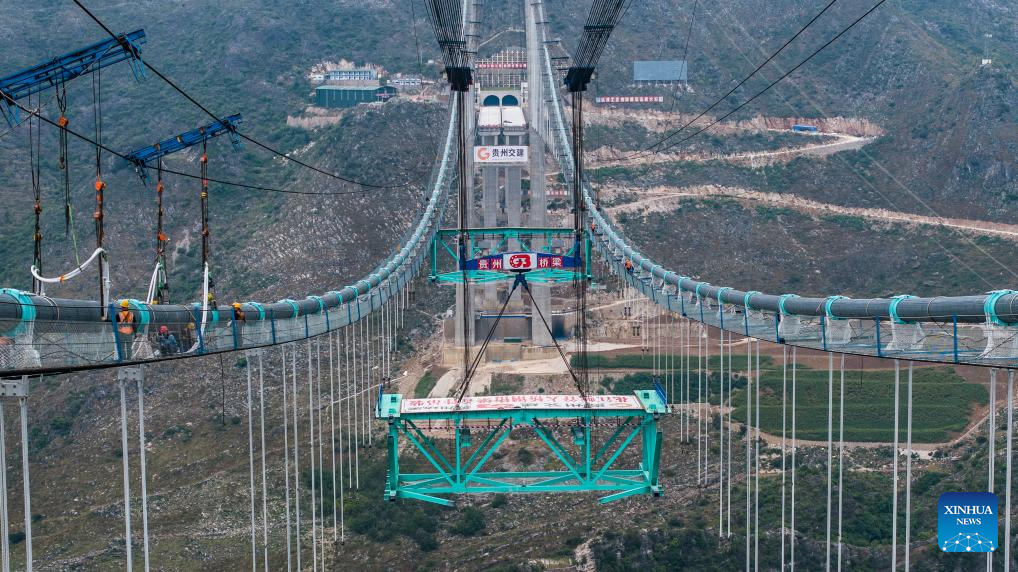
An aerial drone photo taken on Nov. 4, 2024 shows the Huajiang Grand Canyon Bridge's first steel truss girder, weighing about 215 tonnes, being hoisted to its designated position for installation in southwest China's Guizhou Province.
Guizhou, with 92.5 percent of its area covered by mountains and hills, has been committed to eliminating bottlenecks in land transportation. By far, the province has built over 200,000 km of roads.
As the only province in China with no plain terrain, Guizhou has garnered many world records by building some 30,000 bridges among its karst mountains. The province is dubbed "the museum of world bridges" due to the vast numbers, various types and complex technologies of these gigantic bridges. (Xinhua/Tao Liang)
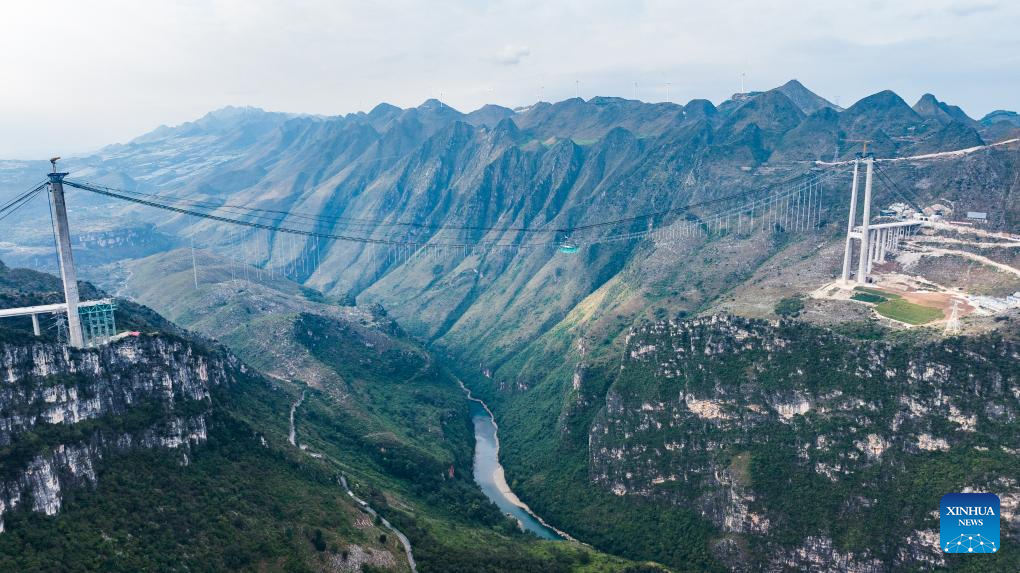
An aerial drone photo taken on Nov. 4, 2024 shows the Huajiang Grand Canyon Bridge's first steel truss girder, weighing about 215 tonnes, being hoisted to its designated position for installation in southwest China's Guizhou Province.
Guizhou, with 92.5 percent of its area covered by mountains and hills, has been committed to eliminating bottlenecks in land transportation. By far, the province has built over 200,000 km of roads.
As the only province in China with no plain terrain, Guizhou has garnered many world records by building some 30,000 bridges among its karst mountains. The province is dubbed "the museum of world bridges" due to the vast numbers, various types and complex technologies of these gigantic bridges. (Xinhua/Tao Liang)
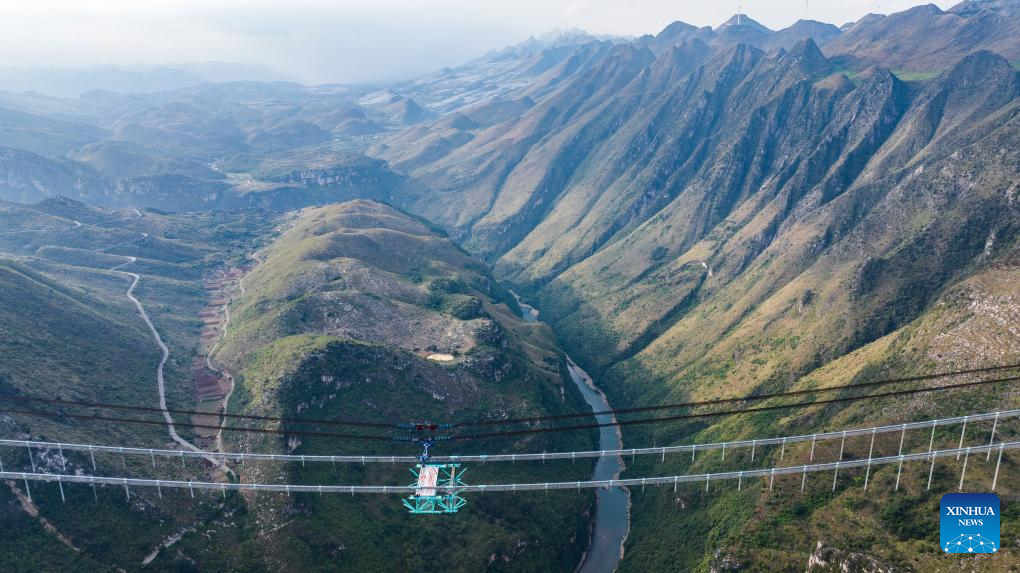
An aerial drone photo taken on Nov. 4, 2024 shows the Huajiang Grand Canyon Bridge's first steel truss girder, weighing about 215 tonnes, being hoisted to its designated position for installation in southwest China's Guizhou Province.
Guizhou, with 92.5 percent of its area covered by mountains and hills, has been committed to eliminating bottlenecks in land transportation. By far, the province has built over 200,000 km of roads.
As the only province in China with no plain terrain, Guizhou has garnered many world records by building some 30,000 bridges among its karst mountains. The province is dubbed "the museum of world bridges" due to the vast numbers, various types and complex technologies of these gigantic bridges. (Xinhua/Tao Liang)
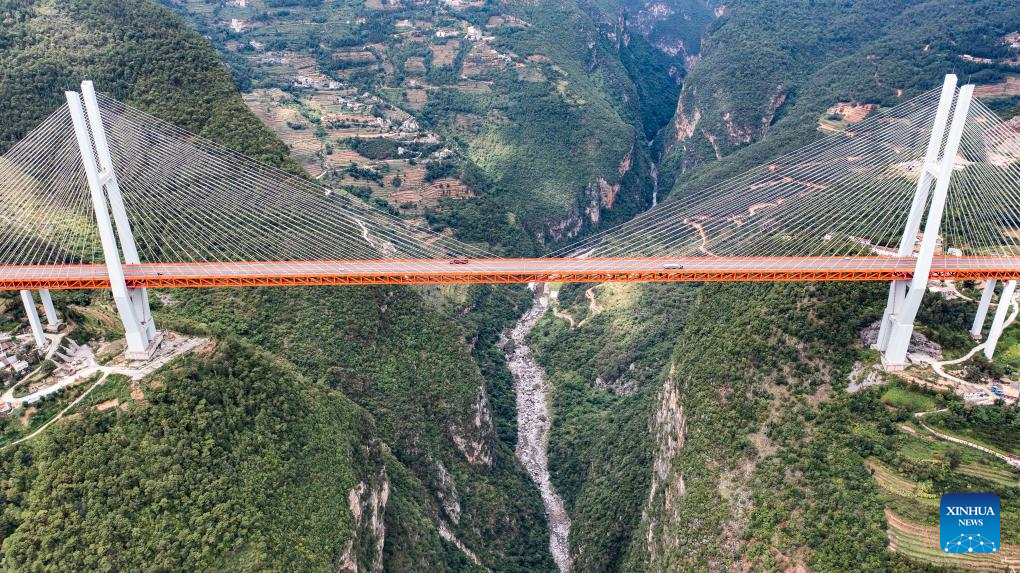
This aerial photo taken on Sept. 22, 2024 shows the Beipanjiang Bridge on the Hangzhou-Ruili Expressway, southwest China's Guizhou Province.
Guizhou, with 92.5 percent of its area covered by mountains and hills, has been committed to eliminating bottlenecks in land transportation. By far, the province has built over 200,000 km of roads.
As the only province in China with no plain terrain, Guizhou has garnered many world records by building some 30,000 bridges among its karst mountains. The province is dubbed "the museum of world bridges" due to the vast numbers, various types and complex technologies of these gigantic bridges. (Xinhua/Tao Liang)
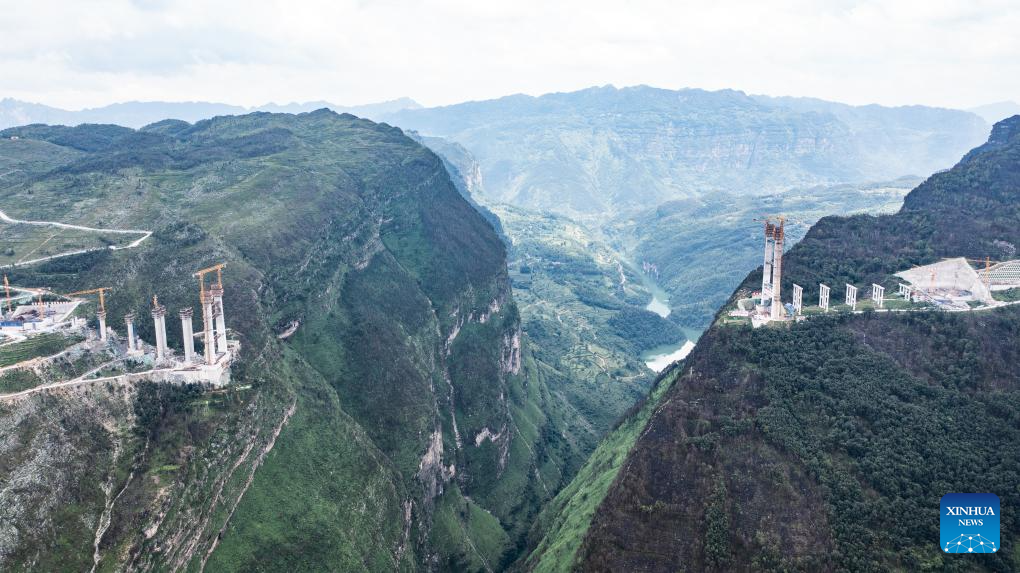
This aerial drone photo taken on July 17, 2024 shows the Tianmen grand bridge under construction in southwest China's Guizhou Province.
Guizhou, with 92.5 percent of its area covered by mountains and hills, has been committed to eliminating bottlenecks in land transportation. By far, the province has built over 200,000 km of roads.
As the only province in China with no plain terrain, Guizhou has garnered many world records by building some 30,000 bridges among its karst mountains. The province is dubbed "the museum of world bridges" due to the vast numbers, various types and complex technologies of these gigantic bridges. (Xinhua/Tao Liang)
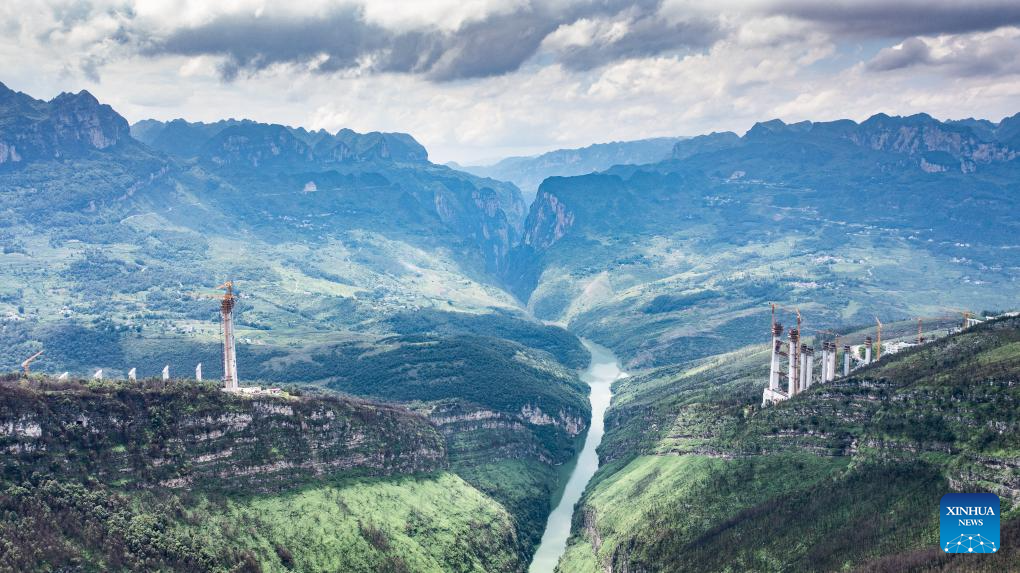
This aerial drone photo taken on July 17, 2024 shows the Tianmen grand bridge under construction in southwest China's Guizhou Province.
Guizhou, with 92.5 percent of its area covered by mountains and hills, has been committed to eliminating bottlenecks in land transportation. By far, the province has built over 200,000 km of roads.
As the only province in China with no plain terrain, Guizhou has garnered many world records by building some 30,000 bridges among its karst mountains. The province is dubbed "the museum of world bridges" due to the vast numbers, various types and complex technologies of these gigantic bridges. (Xinhua/Tao Liang)
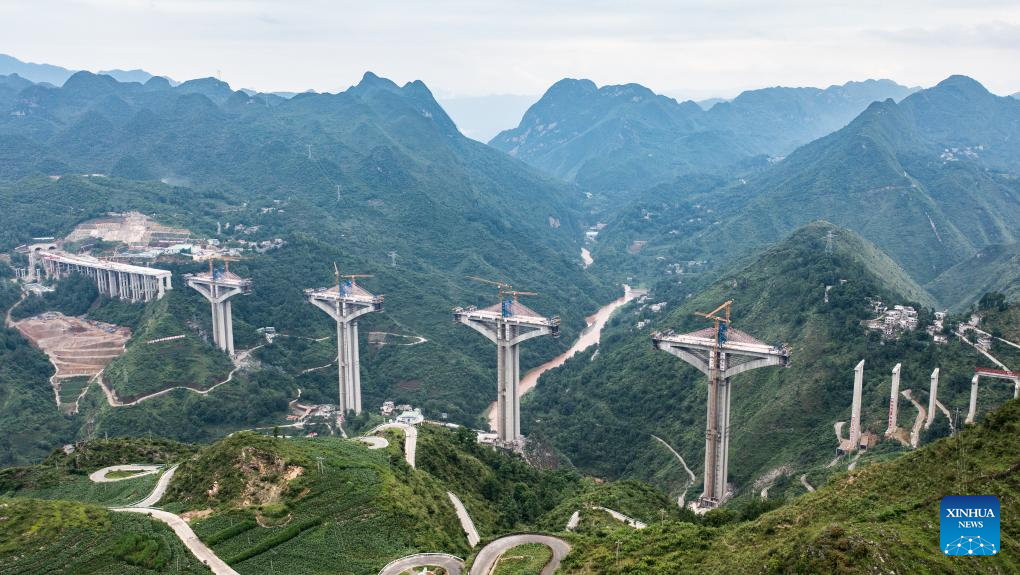
An aerial drone photo taken on June 17, 2024 shows the construction site of Liuzhi grand bridge on Nayong-Qinglong Expressway in Liupanshui, southwest China's Guizhou Province.
Guizhou, with 92.5 percent of its area covered by mountains and hills, has been committed to eliminating bottlenecks in land transportation. By far, the province has built over 200,000 km of roads.
As the only province in China with no plain terrain, Guizhou has garnered many world records by building some 30,000 bridges among its karst mountains. The province is dubbed "the museum of world bridges" due to the vast numbers, various types and complex technologies of these gigantic bridges. (Xinhua/Tao Liang)
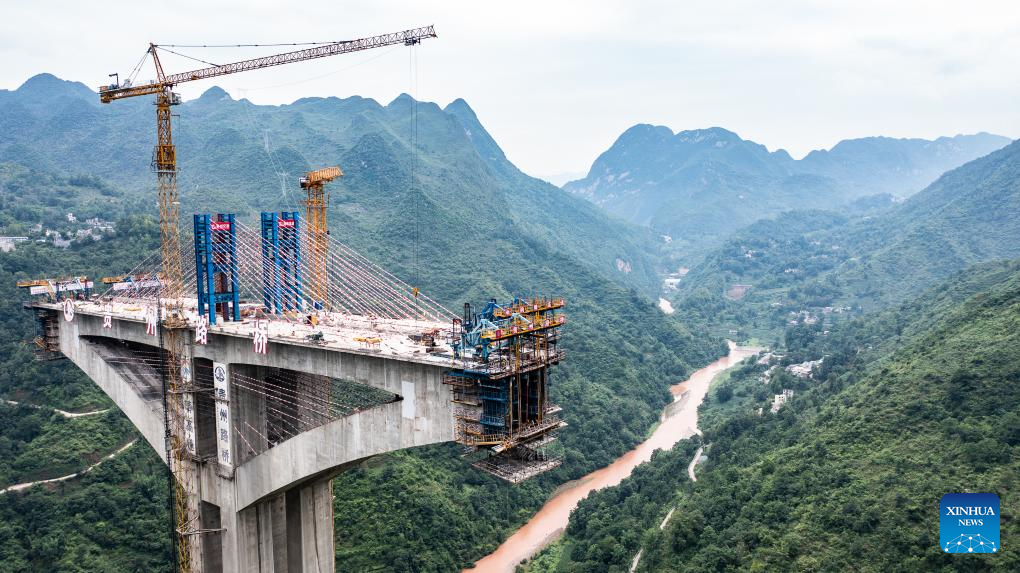
An aerial drone photo taken on June 17, 2024 shows the construction site of Liuzhi grand bridge on Nayong-Qinglong Expressway in Liupanshui, southwest China's Guizhou Province.
Guizhou, with 92.5 percent of its area covered by mountains and hills, has been committed to eliminating bottlenecks in land transportation. By far, the province has built over 200,000 km of roads.
As the only province in China with no plain terrain, Guizhou has garnered many world records by building some 30,000 bridges among its karst mountains. The province is dubbed "the museum of world bridges" due to the vast numbers, various types and complex technologies of these gigantic bridges. (Xinhua/Tao Liang)

An aerial drone photo taken on May 28, 2024 shows the construction site of Wumengshan grand bridge on Nayong-Qinglong Expressway in southwest China's Guizhou Province.
Guizhou, with 92.5 percent of its area covered by mountains and hills, has been committed to eliminating bottlenecks in land transportation. By far, the province has built over 200,000 km of roads.
As the only province in China with no plain terrain, Guizhou has garnered many world records by building some 30,000 bridges among its karst mountains. The province is dubbed "the museum of world bridges" due to the vast numbers, various types and complex technologies of these gigantic bridges. (Xinhua/Tao Liang)
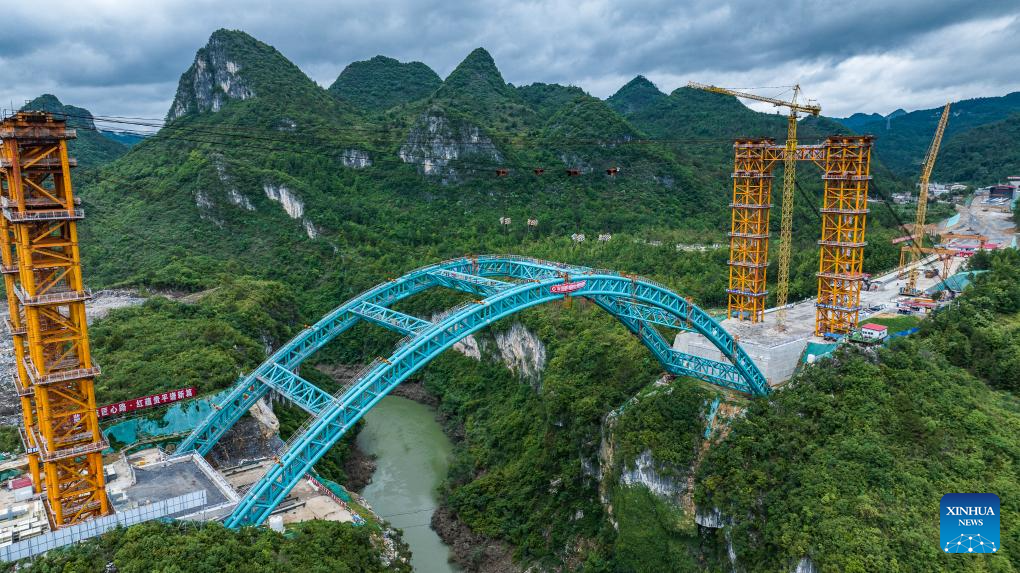
An aerial drone photo taken on May 10, 2024 shows the construction site of the Lami River bridge along the Guiyang-Pingtang expressway in southwest China's Guizhou Province.
Guizhou, with 92.5 percent of its area covered by mountains and hills, has been committed to eliminating bottlenecks in land transportation. By far, the province has built over 200,000 km of roads.
As the only province in China with no plain terrain, Guizhou has garnered many world records by building some 30,000 bridges among its karst mountains. The province is dubbed "the museum of world bridges" due to the vast numbers, various types and complex technologies of these gigantic bridges. (Xinhua/Tao Liang)
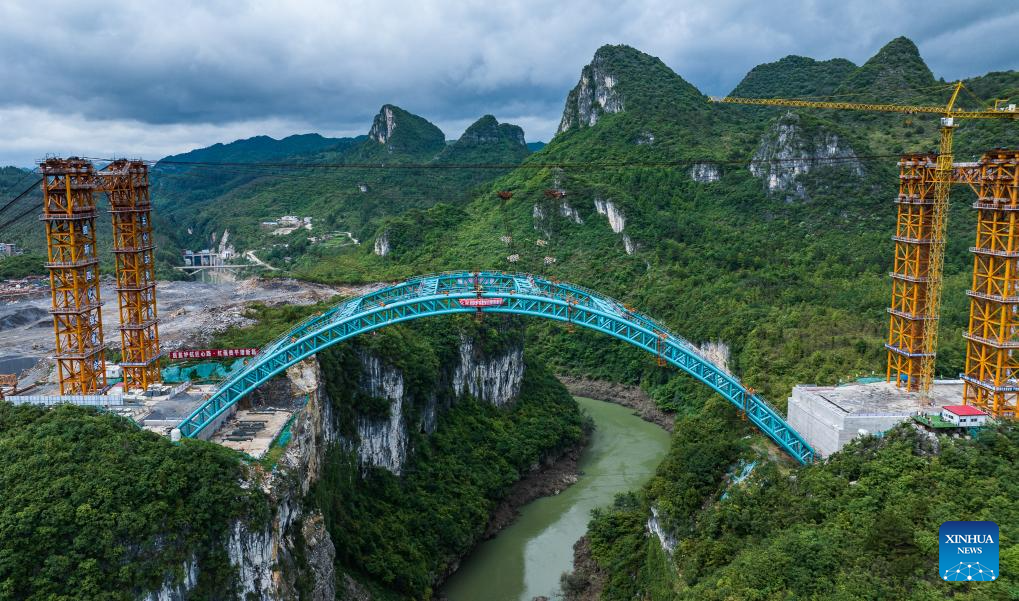
An aerial drone photo taken on May 10, 2024 shows the construction site of the Lami River bridge along the Guiyang-Pingtang expressway in southwest China's Guizhou Province.
Guizhou, with 92.5 percent of its area covered by mountains and hills, has been committed to eliminating bottlenecks in land transportation. By far, the province has built over 200,000 km of roads.
As the only province in China with no plain terrain, Guizhou has garnered many world records by building some 30,000 bridges among its karst mountains. The province is dubbed "the museum of world bridges" due to the vast numbers, various types and complex technologies of these gigantic bridges. (Xinhua/Tao Liang)
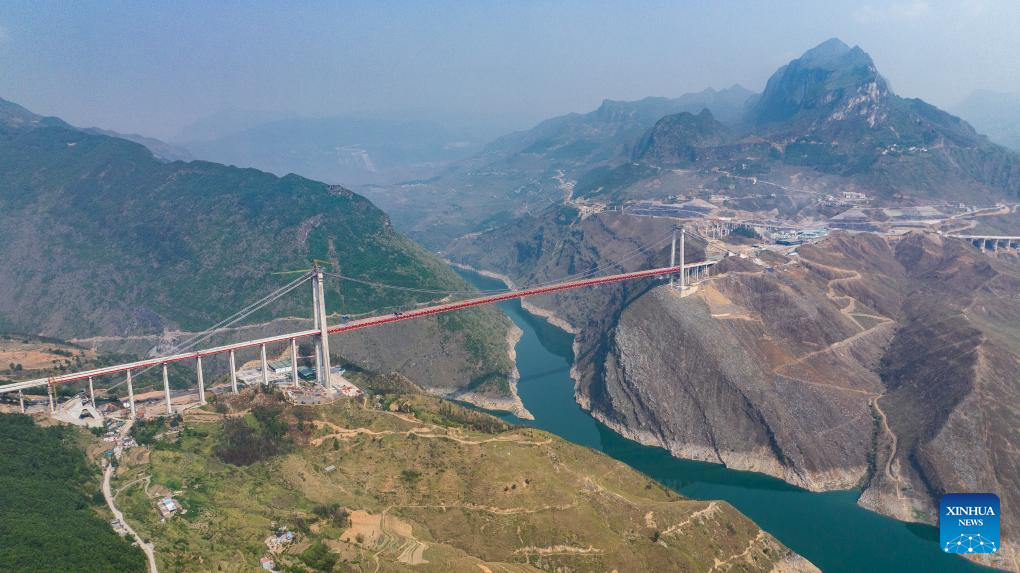
An aerial drone photo taken on April 28, 2024 shows the Zangke River bridge on Nayong-Qinglong Expressway in southwest China's Guizhou Province.
Guizhou, with 92.5 percent of its area covered by mountains and hills, has been committed to eliminating bottlenecks in land transportation. By far, the province has built over 200,000 km of roads.
As the only province in China with no plain terrain, Guizhou has garnered many world records by building some 30,000 bridges among its karst mountains. The province is dubbed "the museum of world bridges" due to the vast numbers, various types and complex technologies of these gigantic bridges. (Xinhua/Tao Liang)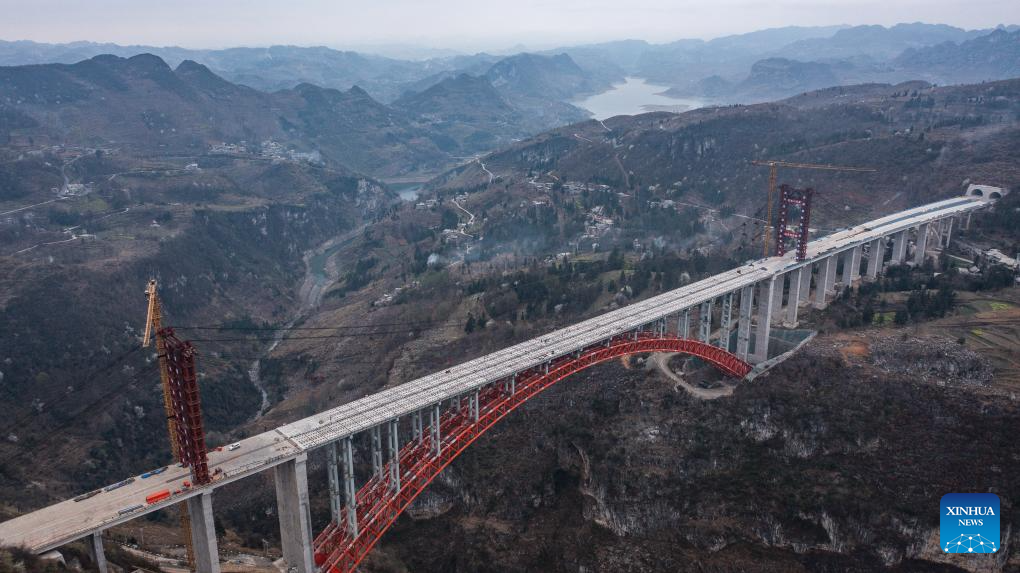
An aerial drone photo taken on March 19, 2024 shows the construction site of Baishuihe bridge on Nayong-Qinglong Expressway in southwest China's Guizhou Province.
Guizhou, with 92.5 percent of its area covered by mountains and hills, has been committed to eliminating bottlenecks in land transportation. By far, the province has built over 200,000 km of roads.
As the only province in China with no plain terrain, Guizhou has garnered many world records by building some 30,000 bridges among its karst mountains. The province is dubbed "the museum of world bridges" due to the vast numbers, various types and complex technologies of these gigantic bridges. (Xinhua/Tao Liang)
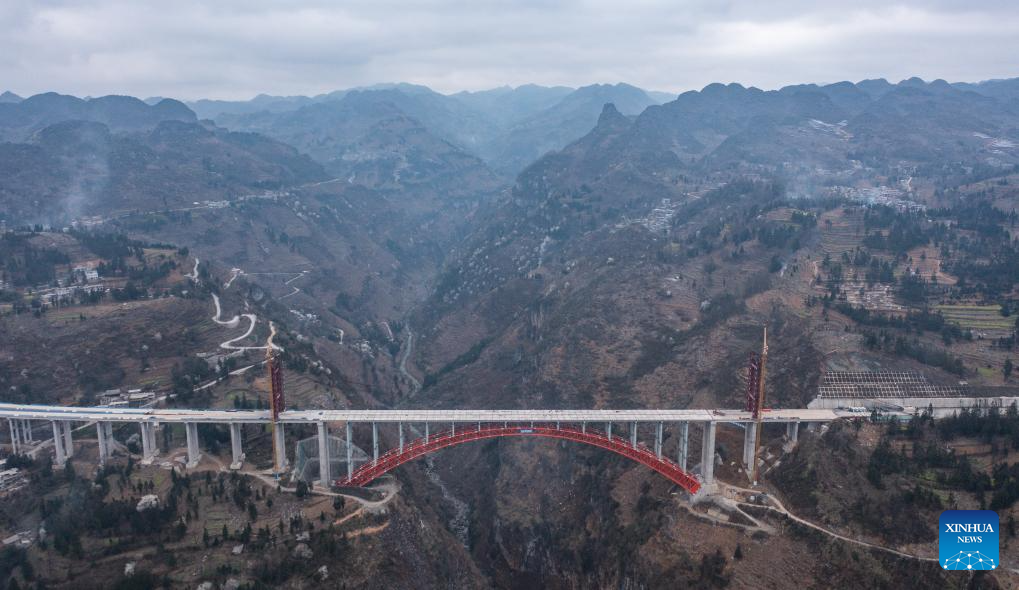
An aerial drone photo taken on March 19, 2024 shows the construction site of Baishuihe bridge on Nayong-Qinglong Expressway in southwest China's Guizhou Province.
Guizhou, with 92.5 percent of its area covered by mountains and hills, has been committed to eliminating bottlenecks in land transportation. By far, the province has built over 200,000 km of roads.
As the only province in China with no plain terrain, Guizhou has garnered many world records by building some 30,000 bridges among its karst mountains. The province is dubbed "the museum of world bridges" due to the vast numbers, various types and complex technologies of these gigantic bridges. (Xinhua/Tao Liang)
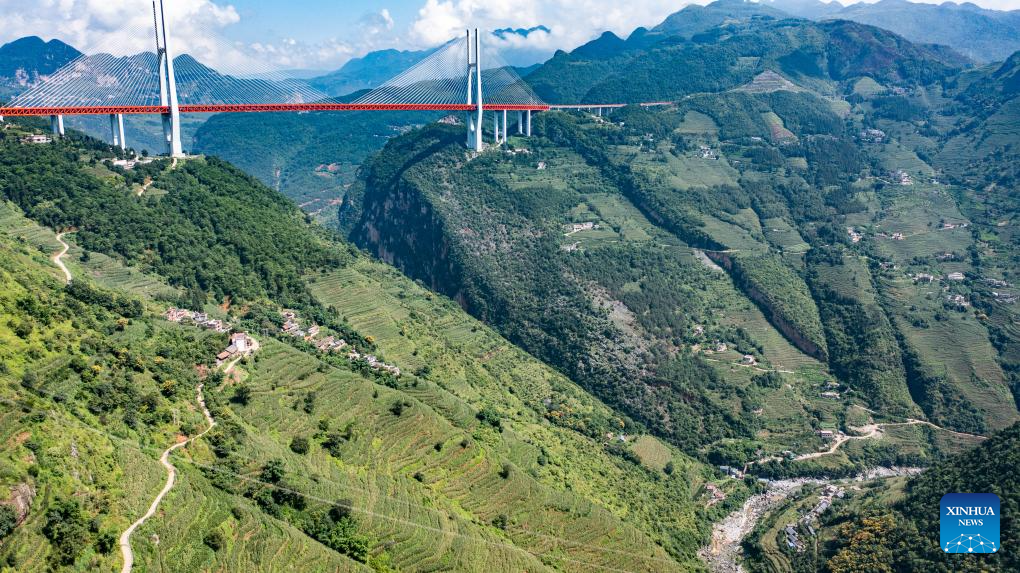
This aerial photo taken on Aug. 16, 2023 shows the Beipanjiang Bridge on the Hangzhou-Ruili Expressway, southwest China's Guizhou Province.
Guizhou, with 92.5 percent of its area covered by mountains and hills, has been committed to eliminating bottlenecks in land transportation. By far, the province has built over 200,000 km of roads.
As the only province in China with no plain terrain, Guizhou has garnered many world records by building some 30,000 bridges among its karst mountains. The province is dubbed "the museum of world bridges" due to the vast numbers, various types and complex technologies of these gigantic bridges. (Xinhua/Tao Liang)



